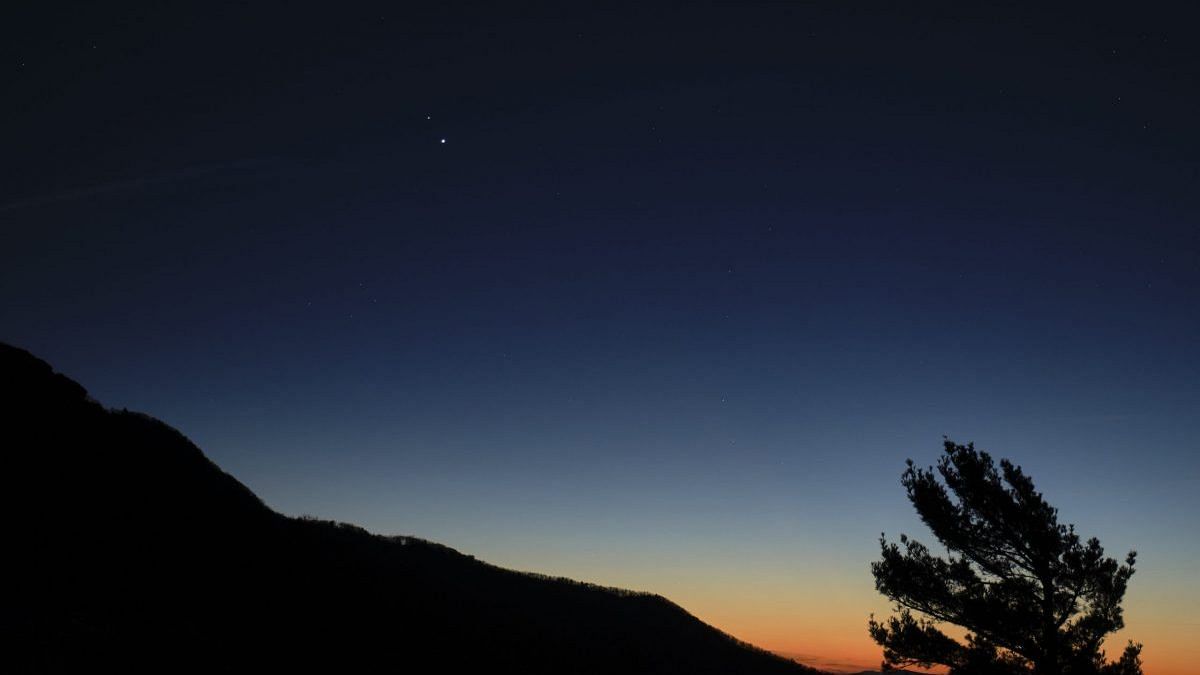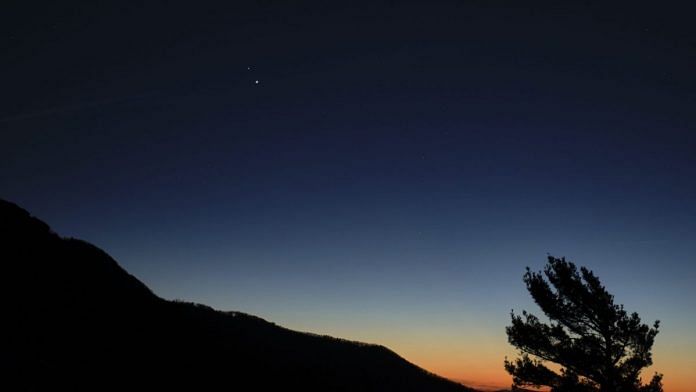

Text size:
Bangalore: The night sky tonight (December 21) will witness a historical event: the great conjunction of Jupiter and Saturn for the first time since 1623. The two planets, which have gotten closer and closer during the course of the last weeks in the night sky, it will appear to merge like a bright object today, before separating.
It is the first time that a large conjunction has occurred, the apparent appearance of the two largest planets in the solar system together in the sky, in 400 years, and the first time that it will be clearly visible after sunset with the naked eye in 800 years.
This planetary conjunction also coincides with the winter solstice in the northern hemisphere, which will see 24 hours of darkness at the North Pole.
Tonight’s conjunction is also the first time that humanity will see a large conjunction through a telescope or obtain a close-up telescopic image of the event, capturing the two gas giants in one frame.
Read also: UK’s space partnership with India takes off with the launch of 36 satellites
How to see it
The great conjunction will be visible in the southwestern sky, above the horizon, after sunset. The conjunction will be visible only until 7.30pm IST, when the planets will get below the horizon.

In recent weeks, Saturn has appeared smaller and weaker than Jupiter, next to it, getting closer and closer. Tonight, both planets will appear to merge as one, visible in the sky as a dim but distorted star. Starting tomorrow, the planets would separate again when Jupiter overtakes Saturn in its orbit from our perspective.
The moon appears much higher, to the left of the great conjunction.
The planetary alignment will be visible to the naked eye, even through light pollution in cities, but in a cloudless sky. Through telescopes or binoculars, both planets can be seen in the same frame in a historical first. Powerful telescopes can capture both the Galilean moons (Jupiter’s four largest moons: Ganymede, Callisto, Europa, Io) and the rings of Saturn.
The conjunction will be visible in most of the world, except closer to the South Pole, which will experience the southern hemisphere summer solstice or 24 hours of daylight.
Planetary conjunctions
Planetary conjunctions are common and can also occur with non-adjacent planets, as they occur only in relation to our perspective from Earth.
While conjunctions with the brightest planet in the night sky, Venus, attract the most excitement, the great Jupiter-Saturn conjunctions occur roughly every 20 years. This is because every two decades, Jupiter (with an orbital period of about 12 years) overtakes Saturn (with an orbital period of about 30 years) in its orbit when viewed from Earth.
Tonight’s grand conjunction is the closest the planets have been in apparent position in recent times. Past great conjunctions have occurred with at least one degree of separation in the night sky between the two planets, while tonight’s conjunction takes place less than one-tenth of a degree apart. This means that both planets can be blocked with just the tip of a pencil when viewed from Earth tonight.
Such a close planetary conjunction will occur on January 30, 2048, with Venus and Saturn in the dawn sky.
Read also: A ‘lost’ supermassive black hole in a distant galaxy leaves scientists stumped
Next Jupiter-Saturn conjunction in 2080
The next major conjunction with Jupiter and Saturn will be in the year 2080. The previous one had been in 1623 CE, just after Galileo refined the telescope, but it was too close to the Sun to be observed. The former, which could be seen clearly in the night sky, occurred in 1226 CE.
The great conjunction is not related to the winter solstice even though they fall on the same day this year.
Solstices on Earth occur twice a year, when the Earth’s axis tilts the most towards the Sun. The pole facing the Sun has its longest day of the year, while the opposite pole has the longest night in the year. year.
The northern hemisphere summer solstice (and the southern hemisphere winter solstice) occurs each year from June 20-21, while the winter solstice occurs from December 21-22.
Read also: Astronomers detect the first fast radio burst in our galaxy, the Milky Way
Subscribe to our channels on YouTube and Telegram
Why the media is in crisis and how you can fix it
India needs free, fair, unscripted and even more questioning journalism as it faces multiple crises.
But the media is in its own crisis. There have been brutal layoffs and pay cuts. The best of journalism is shrinking, giving in to the raw spectacle of prime time.
ThePrint has the best young journalists, columnists and editors working for it. To sustain journalism of this quality, it takes smart, thinking people like you to pay for it. Whether you live in India or abroad, you can do it here.
Support our journalism